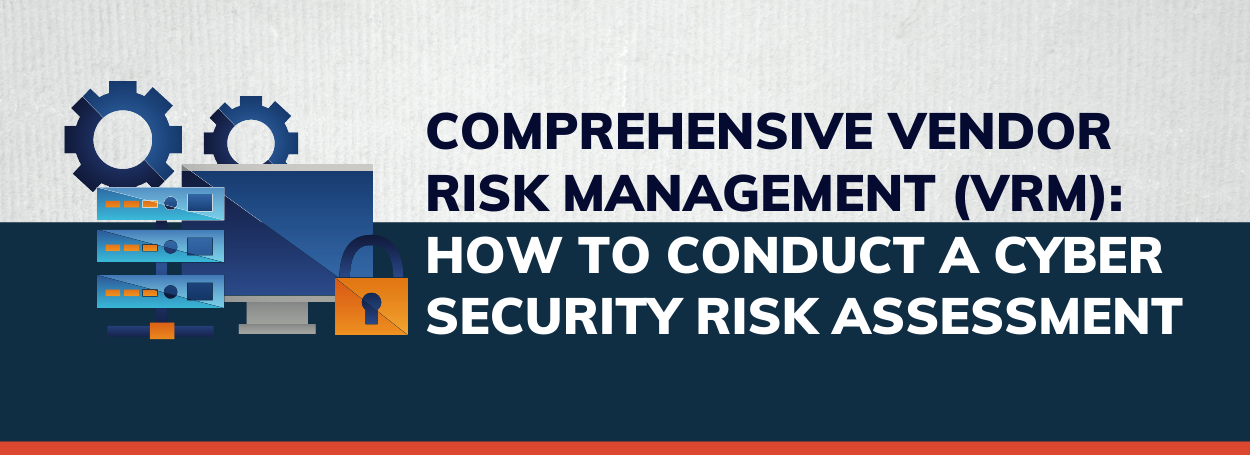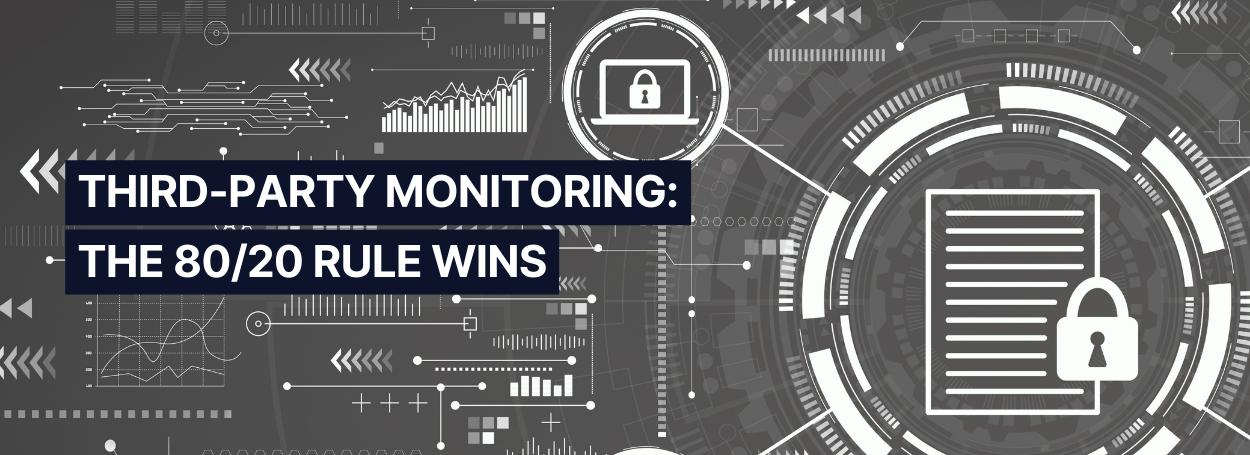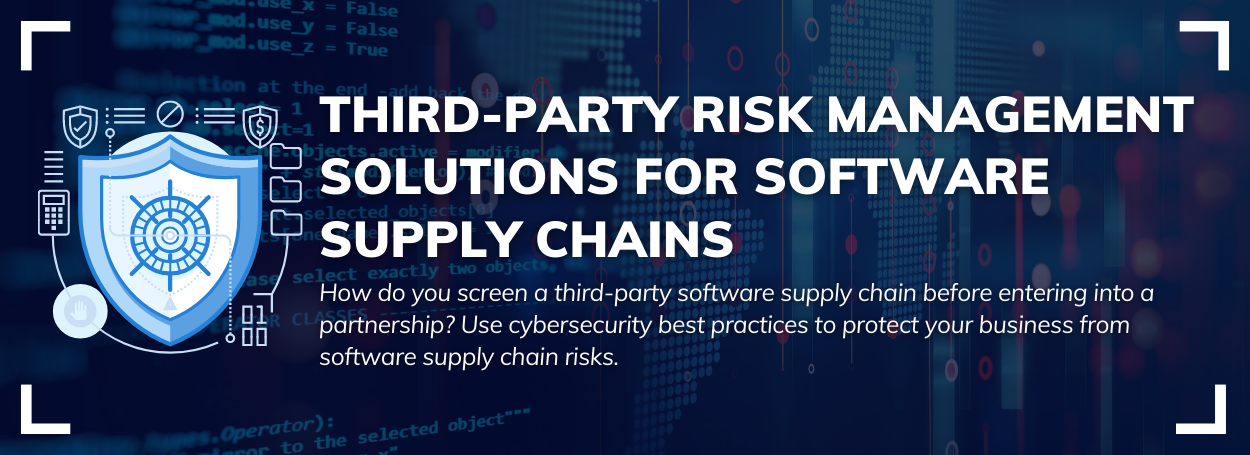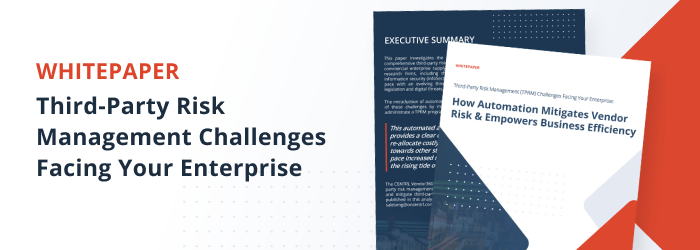Comprehensive Vendor Risk Management (VRM): How to Conduct a Cyber Security Risk Assessment

Third-party vendors play a crucial role in keeping businesses competitive and profitable, so much so that modern-day companies cannot survive without partnerships with vendors.
For a productive collaboration, vendors are given access to the company’s network, data, and other digital assets. That means your vendors are directly connected to your business.
While third parties help keep your organization efficient and operational, they expose it to security risks. Malicious actors are always on the lookout to target your organization.
They may capitalize on your vendors’ security loopholes and vulnerabilities to get access to your networks and critical data. And when a breach occurs, your company has to bear the brunt on all frontiers - reputational, regulatory, financial, legal, and business continuity.
Case in point: The Massive SolarWinds Hack
The good news is that Vendor Risk Management (VRM) can help you reduce third-party security risks. VRM deals with the monitoring and managing risks associated with your supply chain and IT products and service providers.
Comprehensive Vendor Risk Management programs and due diligence identify and mitigate the risks of potential data breaches, security threats, and cyber-attacks that could disrupt your business operations.
But where do you get the critical information for your Third-Party Risk Management (TPRM) plan? This is where a cyber security risk assessment enters the scene. It provides the crucial inputs for building a comprehensive and robust VRM ecosystem.
What is a Vendor Cyber Security Risk Assessment?
According to research conducted by Opus and the Ponemon Institute, 59 percent of businesses have suffered a data breach caused by one of their contractors or third-party providers.
Given the massive ramifications of a potential breach — plus the fact that phishing attempts and other cyber frauds have escalated as a result of the Coronavirus outbreak — it’s more vital than ever to assess a potential new vendor’s cybersecurity posture before onboarding.
A vendor cybersecurity risk assessment questionnaire provides a thorough examination of your vendors’ network security. The assessment is a review and approval process used by businesses to verify whether potential vendors and suppliers will follow established standards and protect sensitive data once under contract.
This, on the other hand, can help you identify high-risk vendors and prevent their impact on your overall cybersecurity posture.
Importance of Cyber Security Risk Assessments
A cybersecurity risk assessment involves identifying, evaluating, and treating security risks and organizational vulnerabilities and weaknesses. Information security assessment helps protect your business from possible cyberattacks, besides lifting the security levels for your critical data.
Vendor security assessments also create awareness among your employees to take cybersecurity seriously. It educates them about the threats your business may face, how and where those threats may emanate, and what they can do to prevent or reduce the risks.
What Should Be in a Vendor Cyber Security Risk Assessment?
You should start with a high-level outline and go into each stage in the following sections. Before you can begin analyzing and mitigating risks, you must first know what information they have, what infrastructure they have, and the value of the data they attempt to safeguard.
You might begin by analyzing your vendor’s documentation to address the following questions:
- What information do we divulge to third parties?
- What and where are they storing this information?
- How do they safeguard and document the data?
- How long do they store data?
- Is the location where the data is stored appropriately secured?
Following that, you’ll have to determine the terms of your evaluation. To get you started, here are some questions:
- First, what is the assessment’s purpose?
- What is the assessment’s scope?
- Are there any priorities or limits that I should be aware of that may impact the assessment?
- Who in the company do I need to speak with to obtain all the required information?
- What risk model does the company employ for risk analysis?
How to Conduct a Cyber Security Risk Assessment: Step-by-Step Guide
Before starting a cybersecurity risk assessment, you must know what data you have, where it is located, and how crucial it is for your company. You must also know the IT infrastructure and digital assets your organization relies on.
Second, you would want to set the framework and specifications for your assessment. That means you have to know the reason for the evaluation, define its scope, prioritize data, identify constraints, and see the risk model currently being used by the company.
Here’s a cyber security risk assessment process that you can undertake:
Step 1: Ascertain the Value of Data
Risk assessment ideally starts with separating the crucial data from the less important one. That’s because the evaluation itself will not come cheap. So the risk assessment has to cover your critical and most valuable data.
The importance of information can only be ascertained in light of its asset value and legal standing. Some questions that you can ask to define the value of the data include:
- Do competing businesses value this information?
- If the data is leaked, could it result in reputational damage?
- What impact could a breach of this information have on the business’s overall profitability, including day-to-day operations?
- What were the costs associated with creating this information? Can it be done again?
After identifying the most critical data and information, you can go to the next step in the assessment process.
Step 2: Identify, Evaluate, and Prioritize Assets
Without knowing your assets, you can’t evaluate and set the assessment’s extent. In addition, you wouldn’t want to assess each piece of an asset because not every asset is critical for cybersecurity.
First, you have to identify and create a list of the crucial assets, such as software, hardware, data, interface, support personnel, security policies, IT architecture, and more. What assets are valuable to a particular business depends on the type of information they store.
Step 3: Determine Cyber Security Risks
This is where you determine the potential cyber threats your business may face. These threats exist in the form of vulnerabilities and loopholes in your Information Technology infrastructure, systems, software, and technologies that cybercriminals can exploit to steal your data or harm your business.
Some trends in vendor risks can help your map out some starting risks. Hacking, password theft, DDoS attacks, traffic interception, malware, and SQL injection are the most common risks out there. But there are others, such as human error, that often go ignored.
You never know when an unsuspecting employee may accidentally click on a malware link and expose their device and your organization to a threat. Or they could fall victim to a phishing scam.
While your employees’ devices need strong security controls, educating them about such threats is equally important. By being aware, they will be more cautious.
System failures also pose a severe risk. Unless your systems are running on high-quality equipment, they are exposed to threats.
Next, you have to determine the security risks presented by your third-party vendors. Unfortunately, there is no telling when a vendor or supplier may misuse your critical data or when malicious actors would use your vendors to steal your data or launch attacks.
Step 4: Identify Weaknesses and Loopholes
After identifying the threats, you have to determine your organizational vulnerabilities. Knowing your weaknesses and security loopholes will help you predict what sort of breach could happen.
You can find these vulnerabilities through audits, vulnerability analysis, and software security analysis.
Step 5: Inspect Existing Controls and Execute New Controls
Analyze the current controls to determine whether they’re robust enough to prevent potential breaches. If the controls are not strong enough, you could implement new technical controls, such as encryption, two-factor authentication, patching, and auto-updates. You can also execute non-technical controls like new security policies.
Step 6: Determine the Possibility and Impact of Attacks
You have to determine the likelihood of cyber attacks and their repercussions in this step. For example, what would be the economic effects of a specific data breach? Regulatory penalties? Legal impact and cost? Reputational damage? Business downtime?
Assign each of these possible monetary damage values and use the input to determine a budget to mitigate the identified threats.
Step 7: Define Actions
Depending on the risk levels and priorities, define specific actions for the responsible employees to prevent the threats.
For example, high-level threats require quick actions, whereas, for medium-level risks, you could set a timeline to execute security measures.
And when it comes to low-level risks, you could leave it to the responsible individual to use their best judgment to accept or mitigate the threat.
Why use CENTRL’s Vendor and Cyber Security Risk Assessment Platform?
Doing manual risk assessments can be labor-intensive, time-consuming, costly, and less effective. CENTRL’s vendor risk assessment and management software (Vendor360) allows you to automate the process of risk identification, examination, and mitigation.
Our modern, cloud-based platform streamlines cybersecurity risk assessments. You can use it to develop an assessment template for repeatable use with a complete customization option.
Vendor360 may be used to track evaluation progress, set due dates, and verify the progress of questionnaires across your third-party portfolio. The software also has an intuitive user interface, extensive automation, and analytics dashboards.
It can assist you in accelerating pre-contract risk assessment for new vendors by distributing questionnaires to several internal teams and tracking inherent risks at each contractor’s engagement, product, and service levels.
Schedule a live demo with one of our experts or learn more about Vendor360.


